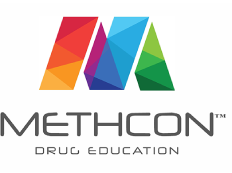As a parent, are you OK with this approach using YOUR tax dollars?
The New Zealand Herald story regarding the promotion of “10 ways to keep well if using meth by Massey High School is an example of how we, as a society in New Zealand have missed the boat when it comes to drug education.
This is why we, as a society need to do something drastic to eliminate Meth harm in New Zealand. Relying in the Government and its quasi agencies is not the answer.
The taxpayer funded New Zealand Drug Foundation has pushed the “harm minimisation” approach for at least the last decade. The theory is flawed and dangerous, particularly when discussing Methamphetamine. Meth is the most addictive drug. It is impossible to use the drug in a safe way.
Any program that promotes or advocate his theory is irresponsible at best.
Methcon’s approach is one of “Harm Elimination”. We believe that the bar needs to be set high and that the best way to avoid Meth harm is to not use at all.
We are starting a nationwide series of public seminars in Northland next month which provide families and the public with advice and information based on reality; not the liberal waffle permeating from the Drug Foundation.
Parents have been left shocked after their children have brought home a school pamphlet on how to use meth “discreetly”.
Auckland’s Massey High School distributed the “information notice” to Level 3 health students they say was provided by the Ministry of Health.
The pamphlet, which can also be found on a website called drughelp.org.nz, features 10 “keeping well” tips for using meth.
“When taking meth eat something every 4 to 5 hours, drink more water than normal..
“If using a gas pipe, clean the inside regularly to remove butt residue which could be inhaled.”
The final tip and most shocking reads: “meth is illegal, it’s also illegal to own a pipe. Be discrete (sic) and only keep 5 grams for personal use.”
A concerned parent posted a photo of the pamphlet to a community Facebook page but the post was quickly removed.
Massey High School released a statement today saying the material was taken out of context of a larger book.
“The material published on social media is one of many resources available to the students for their investigation and analysis.
The pamphlet features 10 “keeping well” tips for using meth.
A concerned parent posted a photo of the pamphlet to a community Facebook page.
“It is not explicitly taught to the students. However, when taken in context of the rest of the booklet, which is aimed at current users who are looking at ways to stop, the dangers of using methamphetamine are apparent.”
The statement said Massey High School did not condone illegal drug use, drugs on the school campus, nor does it teach its pupils how to use drug instruments.
The school has also responded to a concerned parent via Facebook saying it is aware of the notice and is dealing with it.
“It is a document which is provided from the Ministry of Health, for public distribution. It is used in our Level 3 Health classes, where they are dealing with a health issue in NZ,” a Massey High School spokesperson said via Facebook messenger.
A Massey High School spokesperson confirmed this saying “the material can also be found online and is part of ‘Drug Help’, specifically here, a NZ Drug Foundation programme that is fully funded by the Ministry of Health.”
The school said it had discussed this information with the parent, who has subsequently removed her post. However, it has been shared by others not privy to our discussion.”
The Herald has approached the school for further comment and is awaiting a response from the principal.
New Zealand Herald 02/05/2018
This is the page in question.
10 ways to keep well if using meth
Using meth is a risk to your physical and mental health. That said, most of the harm comes not from meth itself but from the stupid stuff people do, or don’t do, when they’re on meth.
- When taking meth, eat something every 4 or 5 hours; drink more water than normal; and if you’ve been awake longer than 24 hours, have a break and relax for a while.
- Brush your teeth after eating food or drinking sweet drinks.
- You can’t sleep on meth; if you want to sleep later don’t use it after 3pm.
- Avoid mixing meth with other drugs or medications, especially hallucinogens and antidepressants. It’s hard to predict how one affects another in your system.
- Protect yourself from HIV and STIs. Meth can make you really horny and a bigger risk taker at the same time.
- Swallowing meth allows your body to use its own filters. It saves your lungs from damage, produces a smoother and longer lasting high, and you’re less likely to use more.
- If using a glass pipe, clean the inside regularly to remove burnt residue which could be inhaled.
- Glass pipes become brittle and get super hot. Be careful with it to avoid burns or cuts, and use a Pyrex pipe if possible.
- Injecting meth is risky. It requires experience to reduce the chance of abscesses, collapsed veins, and infections like Hepatitis C or HIV. If you plan to inject, always use a new needle and avoid sharing any equipment. There are needle exchanges throughout New Zealand.
- Meth is illegal. It’s also illegal to own a pipe. Be discreet and only keep less than 5 grams for personal use.
